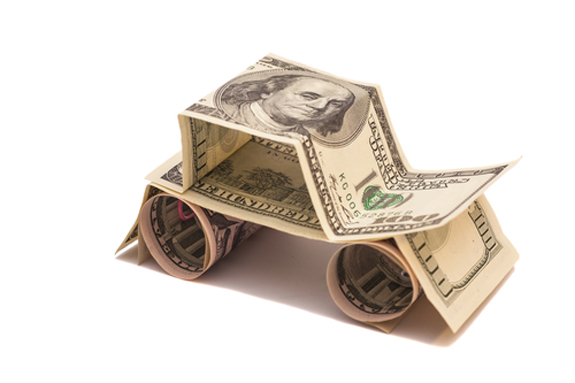Classic Car Valuation: Are Your Clients’ Numbers Up to Date?

By: Jacquelyn Connelly
Although last year’s major classic car auctions saw a sharp decline in overall sales, the classic car market is as strong as ever heading into this summer’s festivities.
Sure, auctions like Pebble Beach usually set the tone for classic car values for the foreseeable future. But be cautious about reading too much into the numbers from these popular events. According to Tim Tompkins, executive vice president of business development at Hagerty Insurance, live auctions only account for about 3% of classic cars sold in the U.S.—private transactions constitute the bulk of sales at about 80%, and online auctions make up the difference.
“Live auctions are just one slice of the pie as far as classic vehicle valuation goes,” explains Jeff Walker, senior collector vehicle insurance specialist at Chubb. “When auction sales are down, it isn’t necessarily indicative of overall vehicle value taking a downturn. It may also mean there was less inventory available for sale, or that the total amount of inventory for sale was not as high-value, or that there were vehicles that simply didn’t sell.”
“If you look at the Monterey auctions last year vs. 2015 and 2016, there were a couple of huge cars in the previous years—a few in excess of $10 million, and I think there was even one in excess of $30 million,” Tompkins adds. “When you don’t have one of those the next year, it looks like the overall market’s down, but it’s just that you didn’t have one really big car.”
As always, some classic car segments are faring better than others. According to Hagerty, emerging collector vehicles poised for near-term value growth include ’90s-era Japanese sports cars such as the Toyota Supra Mk IV and Nissan Skyline, for example.
But with the exception of “best-of-the-best” examples like the Le Mans-winning Jaguar D-Type and the first-ever Shelby Cobra, “we’ve seen some heat come off of the top of the market,” Tompkins says. “The atmosphere has shifted in favor of buyers, who no longer feel like they will be left behind as prices escalate, especially for cars valued above $250,000. This was evident in 2016 when the sell-through rate for these lots fell 15 points.”
“Like any other market, whether it’s art or cars or wine, you have periods where you’ll see some froth—rising tides lift all boats,” points out Ron Fiamma, global head of private collections, AIG’s Private Client Group. “But by all accounts right now, everyone is confident that we’re looking forward to some continued growth.”
As Walker puts it, “the right cars are getting the right money.” But it also helps that “more clients are allocating assets toward tangible assets like cars than ever before,” Fiamma explains.
Why? In the wake of the 2008 recession, collections are no longer just hobbies—they’re valuable assets. “15 years ago, if you talked to a wealth adviser with a client who was collecting art or cars, they would have said, ‘I manage their money, they collect cars—it’s got nothing to do with me,’” Fiamma says. “Fast forward to now—after the volatility in the financial markets, any savvy wealth adviser today looks at their clients’ collections as an alternative asset class. It’s become a much more prominent part of a client’s investment portfolio.”
Fiamma points out that between 2006 and 2016, the S&P 500 returned about 65% on investments. “In that same 10-year period, if you had a garage of vintage Ferraris, your investment would have returned about 450%,” he says. “That shows you how these cars have come into prominence as an investment vehicle—not just as an investment of passion, but also a substantial financial investment.”
As an insurance agent, follow in the footsteps of financial advisers and make sure your classic car clients secure coverage that will protect their vehicles to their full market value.
“Sure, the insurance rate goes up [with the value]. But it’s incrementally very small for what will happen to you and your client if they have a total loss and you give them a $15,000 check for a car they know is worth $35,000,” Tompkins cautions. “You don’t want to have that conversation with a client when for a few dollars more, they could have had proper coverage.”
Although many classic car owners stay on top of valuation, it’s not always the case—and either way, they rely on you to provide guidance on anything involving insurance. “You do it for everything else—if a home goes up in value, you have an appraisal,” points out Tompkins, who encourages agents to use Hagerty’s valuation tool as a starting point.
“There are folks who think the market is stagnating in certain areas, and that is true, but the important thing to remember is that no two cars are exactly alike,” Walker adds. “Many times, even if a client sees a vehicle’s value plateauing, they still want to keep their vehicle insured at a particular value. Vehicle values can jump within a very short period of time. Agents need to be aware.”
Want to know how a classic car policy can help your clients save money? Keep an eye on next week’s Markets Pulse e-newsletter.
Jacquelyn Connelly is IA senior editor.










